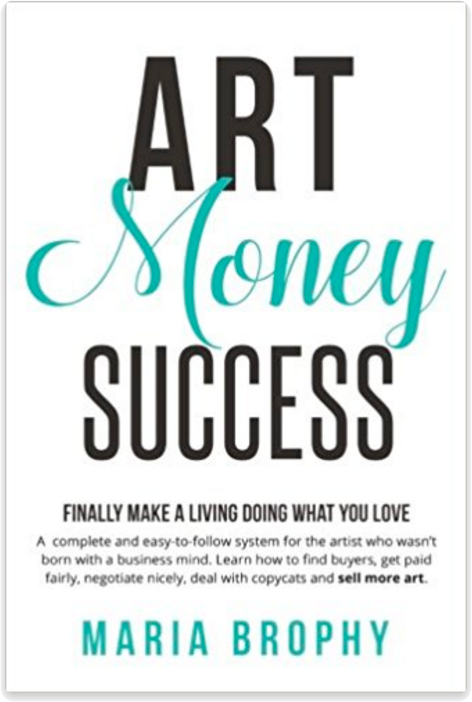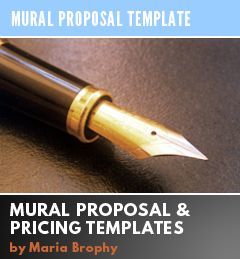
“Making money is art and working is art and good business is the best art.” Andy Warhol
Inevitably, as a creative type, you run into the uncomfortable situation where you are forced to enter into a negotiation on your pricing.
It’s common for artists to be approached by someone who loves their work, only to be asked for it for cheap, or for trade (sometimes, for FREE).
This is a tough position to be in, because you are flattered that someone loves your work. But, on the other hand, you are a professional, and you need to pay your bills. And I don’t know about you, but my studio’s landlord doesn’t accept anything but Legal Tender.
In the surf industry, we have an ugly system called “The Bro Deal.” It’s where if you work in the surf industry, you feel that you should be hooked-up with a special deal, mostly meaning, free. And in turn, you are expected to hook-up other surf industry people up as well.
It’s so ingrained in the industry that surf industry people just expect it. When I go to buy a new surfboard, the surfboard maker, trained after years of not making money at his trade, automatically says “Oh, I can give you a good deal. I’ll give it to you at cost.” And I say, “No, I want you to make money. Charge me the fair amount.”
And when surf industry folks come to us for artwork, there’s an expectation of hooking them up with cheap artwork. (That’s why we focus most of our work outside the industry)
It seems crazy, this notion that anyone would expect to not have to pay for something they want. But it’s prevalent, not just in the surf world, but in the art world as well.
There are a couple tools you can use to counteract the problem of a client expecting cheap pricing:
1.) Use a price sheet. A price sheet will list all the possible options and their pricing. It can be difficult to create at first, because artwork depends on so many different factors – size, complexity, medium, etc. It may take time to create a price sheet, but it’s worth it.
Photographers always use price sheets, which detail the usage fees for their photos. I think artists need to get in the habit of doing the same.
We use five (5) different price sheets; one for high-end surfboard paintings (which range from $3,500 to $20,000, depending on size, complexity.); One for small surfboard tattoos (prices range from $60 to $500); One for large murals; one for paintings (this was the hardest and it’s still not perfect!); and one for usage fees and one-time licensing (I used the photographer’s sheet as a template and plugged our own numbers in there.)
2.) Use a Deal Memo or Proposal, which you present to them after you’ve had time to calculate what the cost will be. (You can find samples of both of these online or in artist books.)
We use Deal Memos and Proposals for everything else that doesn’t seem to fit on a price sheet; those one-off deals that are unusual.
When you hand a price sheet, proposal or deal memo to someone, it tells them two things:
A.) You are a professional who knows your worth; and
B.) This is what everyone pays (like when you go to the grocery store – one price for everyone.)
You may still get someone trying to talk you down in price. You could counteract that by:
- Padding your prices by 10% to leave wiggle room in there for a 10% discount;
- Offer discounts only for multiple projects
- Offer discounts only for returning clients
- Offer discounts only for people who pay by cash or check.
There are many creative ways to charge the right price and at the same time make your client happy.
That way, you can pay your landlord the rent with green stuff!
Maria xxoo
*Stay tuned for my next blog post on THE DEAL MEMO. SUBSCRIBE for my e-mail feeds by putting your e-mail address in the white box below. You’ll get my posts in your in-box.










20 Responses
Great info! Thanks for sharing!
thanks to you and Drew for sharing so much to the art world and fans. Nobody has ever wanted to do that until you two have. kind of like giving away a magic trick by a magician it was never done..Thanks
Come back to Myrtle Beach and have a show sometime I am unable to travel far…
Ugh, I seriously need to work on this. I recently switched to an hourly rate from a flat rate and a client was getting a seriously good deal…. Then, I did something longer than expected and it caused problems. It’s probably easier to price objects than graphic design/illustration services…
Aileen, there are ways to deal with these unexpected additional expenses, also. When quoting a price, or an hourly rate, ADD IN THE QUOTE A STATEMENT THAT SAYS: should there be unexpected delays, extra work, (however you can properly word it for what you do), THERE WILL BE ADDITIONAL CHARGES. Then, when you see that it’s going to take a lot longer than you anticipated, let the client know immediately so there are no surprises. In other professions people charge more if there’s more work – look at Plumbers and Attorneys and car repairmen….and no matter how much we complain, we still have to pay them!
Thanks, Maria. I guess because art is such a “glamour” job with tons of young, eager folks willing to work for less, it’s hard to be taken seriously as a professional. I guess the first step is for all of us to act like professionals in order to raise the bar. I admit that I’ve been working by verbal agreement ’cause it has worked for me about 80% of the time! Still, I am probably missing out on better deals. I’ve gotta step it up! Thanks again.
I know I’m coming into this discussion late, but I hope that Aileen sees this post…please get yourself a copy of “The Graphic Artists Guild Handbook of Pricing and Ethical Guidelines”. It is an invaluable tool that comes out yearly, full of pricing, contracts, practices, and superb info for graphic artists!
Maria, I totally agree that price sheets are a great way to show folks you are a professional. I started using them waaaay back when I was tattooing, and have sheets now for murals, design work (like logos), vinyl lettering, and canvas works.
Put prices together by figuring your time and materials per square foot (or inch). I have a stopwatch on my computer that I click every time I start designing, so I know how much time I put into design work, and I do the same while painting.
Hey, Thank you Dawn! I just updated my contract tonight, actually! I have a new potential client so I updated my contract to include pricing and stipulations for additional work. : ) Got that book too but haven’t read the whole thing yet. Workin’ on it! : )
This is definitely the most difficult part of the art world for me. I’ve been painting surfboards since 2003 and still struggle with the pricing of my work. My friends and hubby are always telling me I sell myself short. How do you put a price on a painted surfboard? Especially when it’s a friend who’s asking. Size, hours spent, my cost of the board….but what do you think they are really worth? Perhaps letting the business minded pros deal with the money part would be best?! Such as the owner of a gallery… 50% commission seems to be the standard. Any suggestions?
AJ, it’s helpful to come up with a price sheet that lists several different options and prices. With surfboards, you can price according to size (i.e. sizes up to 6’6″ are $xxx, 6’6″ to 7’6″ are $xxx and so on).
Have a price sheet and charge the same price for everyone, including friends. You might want to have a standard “friends and family get 10% off” of regular prices. Or maybe even 15%. Your friends and family want you to be successful, too. So don’t feel bad charging them.
I hope this is helpful to you. I wish you great success!
Hi I can’t believe I just found this site! It is heaven sent and you Maria are an angel. I have a question, if you are starting off, is it better to have an assistant or not? And if you do, what is a fair wage/percentage to pay the assistant? Many thanks!
Dear Adriana, that’s a great question! Everyone wants an assistant to help, however, in the beginning of any business, there may not be revenue to pay someone. If you do bring in enough profit to hire someone to help, I would recommend looking in your area to see what a fair wage is for someone to do what you’re asking them to help with.
In California, it’s more expensive to hire someone than it would be in other states. Here, we often pay $15 – $25 an hour for help with shipping and general office duties. In other states, you might pay half that, depending on the cost of living.
But, if we hire a professional (my accountant or webmaster) we pay $75/hour.
It depends on what you are getting help with and where you are located.
I hope that helps!
Sooo….Am ecstatic I found you! Have a very large commission for the city. Do you have a general template you use for a proposal. In the past it was easy for me to be able to give a sq. ft qoute and summary. With a city government they are wanting a more detailed proposal. Any guideline to go by would be great! Thanks so much in advance! And completely concur with your perspective of free info to help other artists. Its so refreshing. Thank you again.
Hey Mark, I’m glad you found me, too!
Sign up for my newsletter, and in ever issue, you will get free artist forms including an illustration agreement/proposal. Find the link to sign up here: https://mariabrophy.com/stuff
Maria.. this site has been incredibly helpful to me by addressing all the issues that are not usually thought about by the average artist…like me..thanks for sharing and please stay in touch:) jay gille
Been an Illustrator/painter workshop instructor all mt adult life. At 76 yrs, still going strong on all fronts.